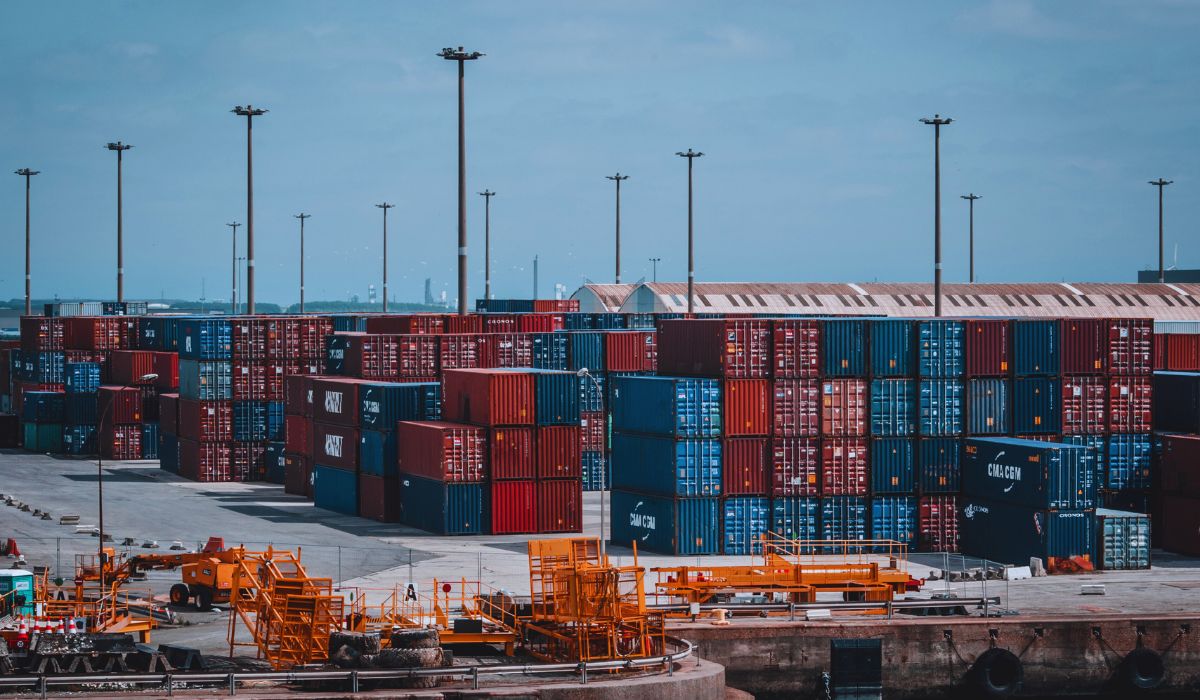In today’s fast-paced world, global trade depends heavily on efficient shipping container transport. Without reliable transport systems in place, businesses face delays, increased costs, and logistical challenges. Over the past few decades, container transport has become the backbone of international shipping, ensuring goods move seamlessly from one part of the world to another.
From large shipping companies to small exporters, everyone relies on secure and timely transport of containers. Whether it’s moving raw materials to factories or delivering finished products to end-users, container transport is essential to global supply chains.

What is Shipping Container Transport?
Shipping container transport refers to the movement of standard-sized containers used for storing and shipping goods. These containers, typically made of steel, are designed to be durable, weather-resistant, and easy to transfer between different modes of transport—ships, trucks, and trains.
Container transport simplifies global shipping by using uniform containers that fit onto vessels, trucks, or railcars without needing to repack the goods inside. This efficiency reduces handling time, improves security, and minimizes damage during transit.
Why Container Transport is Vital for Modern Business
Businesses operating in global markets need a dependable logistics framework. Shipping container transport plays a critical role in this system for several reasons:
-
Efficiency: Containers can be quickly loaded, unloaded, and transferred across different transport modes.
-
Security: Sealed containers protect goods from theft, weather, and damage.
-
Cost Savings: Standardized transport reduces labor costs and increases cargo volume per shipment.
-
Flexibility: Containers carry a wide range of products, from electronics to food to industrial equipment.
Many industries, including manufacturing, retail, agriculture, and energy, depend on reliable container transport to keep their operations running smoothly.
Types of Shipping Container Transport
Depending on distance, cargo type, and destination, different transport methods are used to move containers globally. The most common include:
Sea Freight
Container ships carry thousands of containers across oceans, making sea freight the most cost-effective option for large-scale international shipping. Ports around the world handle millions of containers daily, connecting businesses with suppliers and customers globally.
Road Transport
After containers arrive at a port, they are often transferred to trucks for delivery to warehouses, distribution centers, or final destinations. Road transport offers flexibility for short and medium distances, especially in areas with developed highway infrastructure.
Rail Transport
For landlocked regions or long-distance inland transport, rail provides a reliable option. Containers can be loaded onto trains, reducing road congestion and offering an environmentally friendly alternative.
Intermodal Transport
Often, a combination of sea, rail, and road transport is used, known as intermodal transport. This approach ensures the most efficient route is taken, reducing transit times and costs.
Key Considerations for Successful Container Transport
Organizing shipping container transport requires careful planning and attention to detail. To ensure a smooth process, businesses need to consider:
-
Container Size and Type: Standard containers come in 20-foot and 40-foot sizes, with options like refrigerated (reefer) containers for temperature-sensitive goods.
-
Transport Route: Choosing the most efficient route based on distance, cost, and timing.
-
Customs and Documentation: Ensuring all required paperwork is completed to avoid delays at borders.
-
Insurance Coverage: Protecting goods against damage, loss, or theft during transit.
-
Transport Partners: Working with reliable shipping companies and logistics providers, such as Yankel, to guarantee secure and timely delivery.
The Role of Technology in Container Transport
Modern technology has transformed shipping container transport, making it more transparent and efficient. GPS tracking, automated port handling, and digital documentation have improved the visibility and management of shipments.
Businesses can now track containers in real-time, predict delivery times, and quickly address any issues that arise during transit. This technological advancement has increased confidence in global shipping and allowed companies to expand their markets.
Environmental Impact and Sustainable Transport
While container transport is essential for trade, it also contributes to carbon emissions. Many companies are now focusing on sustainability by:
-
Using fuel-efficient ships and trucks
-
Optimizing transport routes to reduce distance traveled
-
Investing in electric and hybrid vehicles for road transport
-
Improving container utilization to maximize cargo per shipment
Sustainable shipping container transport not only helps the environment but also reduces operational costs in the long term.
Common Challenges in Container Transport
Despite the advantages, there are challenges that businesses must navigate, including:
-
Port Congestion: High traffic at major ports can cause delays.
-
Regulatory Changes: Evolving trade policies or customs regulations may impact transit times.
-
Weather Disruptions: Storms or natural disasters can delay shipments, especially at sea.
-
Container Shortages: Imbalances in global container distribution can lead to shortages in certain regions.
Proactive planning, choosing experienced logistics partners, and leveraging technology can help overcome these obstacles.
The Future of Shipping Container Transport
The global economy shows no signs of slowing, and neither does the demand for efficient shipping container transport. Future trends are expected to focus on:
-
Automation: Increased use of robotics and AI at ports to speed up operations.
-
Green Initiatives: More eco-friendly ships and transport solutions.
-
Digital Transformation: Continued growth of digital platforms for tracking and managing shipments.
-
Smart Containers: Containers equipped with sensors for real-time monitoring of temperature, humidity, and location.
These developments aim to make container transport more reliable, secure, and environmentally responsible.
Conclusion
In the world of global trade, efficient shipping container transport is non-negotiable. It keeps supply chains moving, connects markets, and enables businesses to thrive internationally. By embracing technology, planning effectively, and working with trusted partners like Yankel, companies can navigate the complexities of container transport with confidence.
As international shipping evolves, businesses that stay ahead of transport trends and invest in reliable logistics will continue to grow and succeed in the competitive global marketplace.









